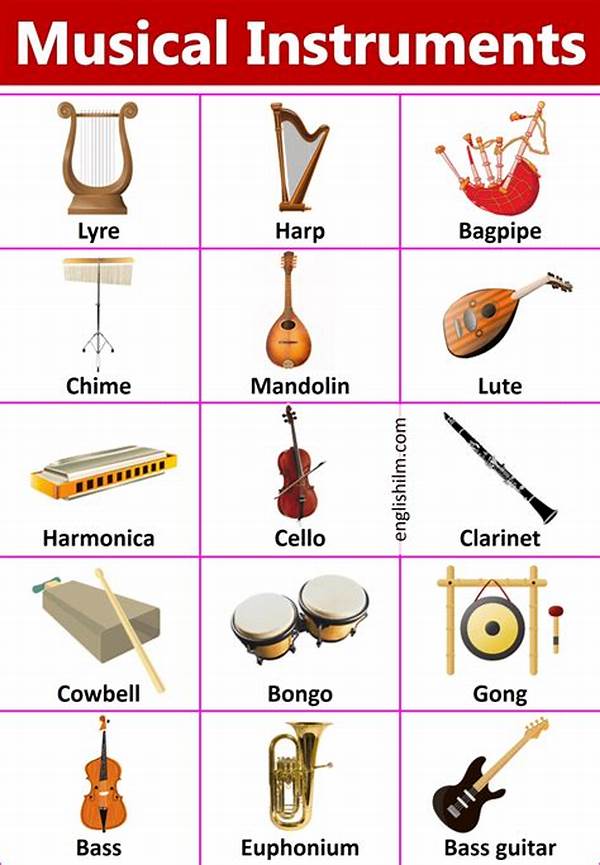In a world where conflict and discord often dominate the headlines, many seek solace in the universal language of music. It’s intriguing how a simple instrument can transcend borders and bring about a sense of peace and cultural harmony. This is not just an opinion; it’s a phenomenon happening worldwide, with instruments acting as ambassadors of cultural exchange and unity.
Read More : Music Instrument Crafted From Bamboo To Create Calming Tones
Imagine attending a music festival where sounds from different continents blend to create a masterpiece of global culture. While music itself is universal, certain instruments stand out for their unique capacity to promote peace and harmony among diverse cultures. These instruments evoke a sense of connection and cooperation, capable of breaking down barriers and cultivating a global community bound by melodious tunes instead of divisive rhetoric.
The Role of Music in Bridging Cultures
When you think about which instrument best embodies the ideals of peace and cultural harmony, the task becomes as complex as composing a symphony itself. Yet, some instruments have historically held this significant role, serving as a bridge between different cultural narratives.
Instruments of Peace: The Oud
The oud, a pear-shaped stringed instrument often associated with Middle Eastern music, exemplifies cultural unity through its harmonious melodies. This ancient instrument has traversed borders over centuries, sharing its soothing sound with audiences from Europe to Asia.
Its enchanting notes have a mesmerizing effect, often compared to the calming presence of a wise elder. The oud carries with it stories of ancient civilizations and echoes of street markets bustling with life. By integrating into various musical traditions, the oud symbolizes the potential for cultures to blend seamlessly—promoting peace through the power of music.
Exploring the Djembe: A Drum of Unity
On the other end of the spectrum, the djembe, a traditional African drum, is equally compelling in its representation of unity. Drums, in general, are often seen as a heartbeat of a community, reflecting its emotions and energies. The djembe, in particular, is known for its ability to bring people together in dance and celebration.
This drum calls for participation; it invites people to make music collectively, fostering a sense of belonging and shared experience. The communal spirit it generates is unparalleled, thus making it a strong candidate for an instrument representing peace and cultural harmony.
The Universal Influence of Music
The impact of an instrument like the oud or the djembe goes beyond mere entertainment. They serve as tangible representations of cultural narratives, encapsulating the hopes, dreams, and histories of the people they represent. By promoting these instruments and their music, we don’t just spread art—we advocate for understanding, tolerance, and togetherness.
Investing in Cultural Education
Creating opportunities for cultural education through music about these instruments is a worthwhile endeavor. Encouraging schools and communities to incorporate lessons about such instruments can instill appreciation from a young age. Workshops, music festivals, and collaborative projects can play an essential role in harnessing music’s power to unite.
The Economic Perspective: Music as a Cultural Export
From a marketing lens, these instruments have untapped potential as cultural exports. Promoting them globally can lead to economic benefits through cultural tourism and music festivals aimed at international audiences. The stories and traditions encapsulated in the music of the oud or djembe can transform into a shared global asset, powered by cultural curiosity and artistic appreciation.
Read More : Chinese Traditional Music Instrument Part Of Tang Dynasty Celebrations
Embracing a Global Music Perspective
By investing in the promotion of these peace-promoting instruments, societies can cultivate a deeper appreciation for diversity. More than just sounds, they are the embodiment of a collective narrative, a beautiful mosaic of history and culture played out in melodic form.
Breaking Boundaries with Music
Music indisputably has the power to evoke emotions and foster connections. Instruments representing peace and cultural harmony serve as reminders of our shared humanity. They challenge us to look beyond borders, race, and religion, and focus on the harmony that music so effortlessly creates.
A Call to Action
For anyone passionate about music, whether as a musician, educator, or enthusiast, there’s a clarion call to further the cause of peace through music. Participate in networks that foster dialogue through music, promote intercultural exchanges, and allow these instruments to thrive.
Conclusion: A Harmonious Future
In conclusion, naming an instrument that represents peace and cultural harmony is more than just picking a favorite from a lineup. It’s about celebrating instruments that echo the sounds of unity and peace, such as the oud and the djembe. By doing so, we not only preserve cultural treasures but also pave the way for a harmonious future orchestrated by the universal language of music.
The Power of Melodic Diplomacy
Let’s transform how we think about musical instruments—not just as tools for creating sound but as catalysts for dialogue, promoters of peace, and bearers of global unity. Join the movement, play, listen, explore, and let the instruments guide you toward a world where harmony is the norm, not the exception.
Strum, Beat, and Harmonize
So, the next time someone asks you to name a musical instrument representing peace and cultural harmony, let your answer reflect not just the sound it makes, but the hope it carries: a harmonious note in the global concert of cultures.
